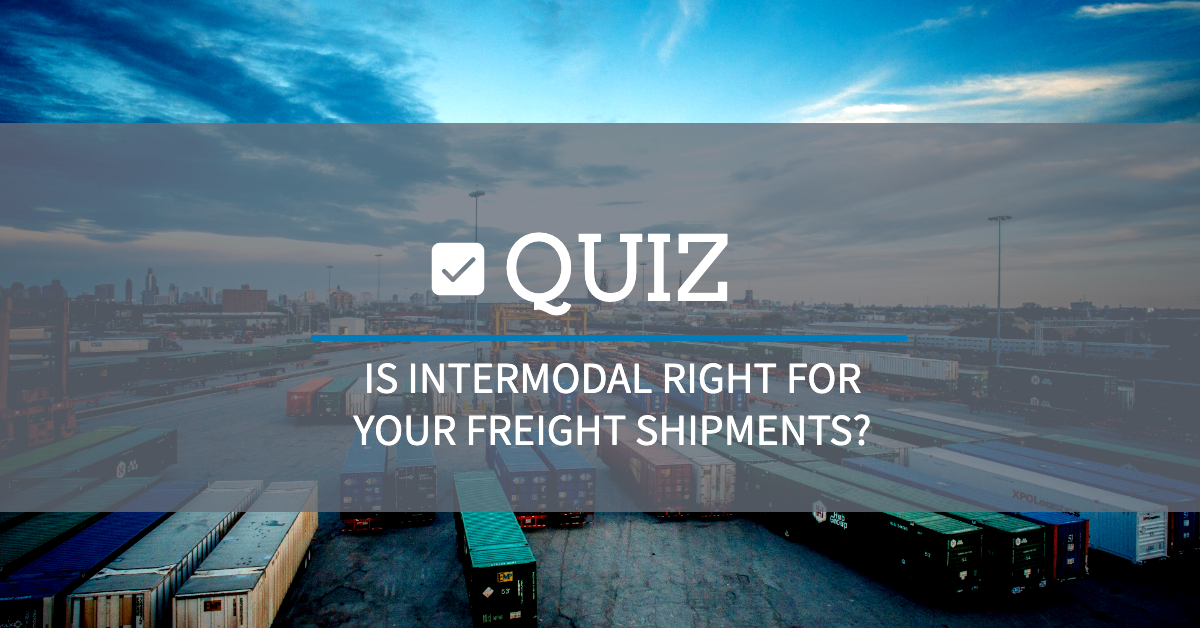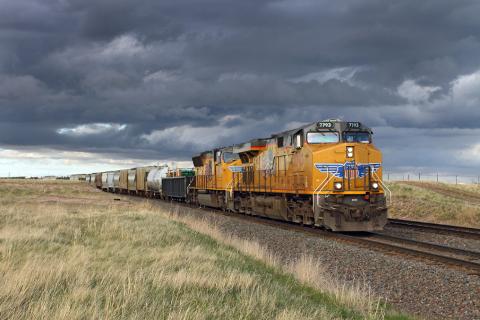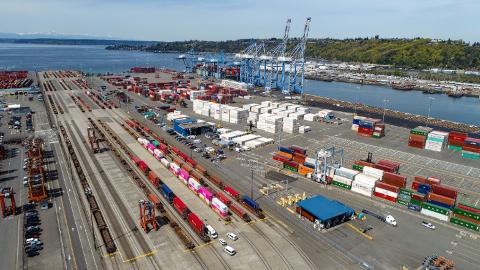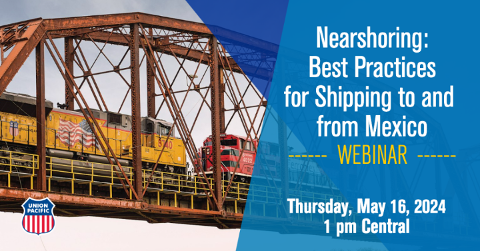Intermodal shipping refers to moving freight by two or more modes of transportation, allowing freight to travel in containers that move seamlessly between trucks, trains and cargo ships. Intermodal offers numerous benefits, so if you’re currently shipping products across land by truck alone, you may be missing out.
Because intermodal uses rail for the long haul, it allows shippers to leverage a more affordable shipping solution, while maintaining the flexibility of trucks for pick-up and delivery. On average, railroads can move one ton of freight more than 470 miles per gallon of fuel, so using rail for the long-haul portion of the trip lets shippers leverage a more environmentally friendly way to ship, too.
Intermodal is safe, reliable, green and cost effective, and you can ship just about anything in an intermodal container. But is it a good fit for your freight shipments? Take the quiz below to find out.
The Benefits of Intermodal Shipping
- Cost Effective: Intermodal shipping combines the flexibility of trucks with the economics of rail. In almost all cases, rail provides a cost savings compared to shipping long-distances by truck, so including rail in your shipping mix can lower your transportation costs. How much could you save by using intermodal? Check out this Intermodal Savings Calculator to get an estimate.
- Available Capacity: The trucking industry continues to face driver shortages, making it difficult for motor carriers to accept tendered loads. Union Pacific is the only Western railroad to provide access to North America’s largest fleet of rail-owned domestic containers. With an extensive equipment supply, we have the capacity to move your shipments.
- Sustainable: On average, railroads can move one ton of freight more than 470 miles per gallon of fuel, making rail the most environmentally friendly way to move freight over land. Trains generate a carbon footprint that is 75 percent less than trucks, so when shippers convert the long-haul portion of their transit to rail, they are leveraging a more environmentally friendly way to ship. Want to know how intermodal shipping can reduce your carbon footprint? Calculate your environmental savings.
- Secure: Intermodal containers can only be opened at the origin, at customs and at the destination or transload facility. This keeps your product safe and reduces the likelihood of tampering and theft.
- Consistent, Reliable Service: Intermodal offers reliable delivery with transit times comparable to long-haul trucking. As part of a forward staging strategy, intermodal can even meet JIT shipping needs.
Learn More
Learn More
If you ship freight long distances and are looking to reduce transportation costs, intermodal shipping may be for you. Get in touch to learn more.
Related Articles









